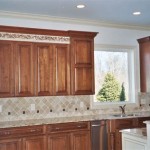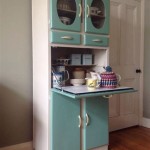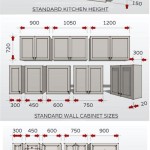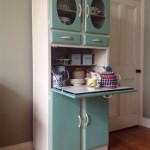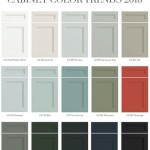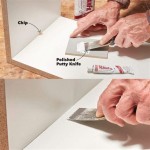Kitchen Cabinet Refinishing Calgary: A Comprehensive Guide
Kitchen cabinet refinishing in Calgary presents a cost-effective and environmentally conscious alternative to complete kitchen remodels. This process revitalizes the existing cabinetry, updating the aesthetic appeal of the kitchen without incurring the significant expenses and disruption associated with installing entirely new units. Refinishing encompasses a range of techniques, from simple cleaning and touch-ups to comprehensive surface preparation, staining, and sealing. The specific methods employed depend on the existing finish, the type of wood, and the desired outcome.
The decision to refinish rather than replace cabinets often stems from budgetary constraints, a desire to maintain the existing kitchen layout, or a preference for the inherent character of the original cabinetry. Older cabinets, particularly those constructed from solid wood, are often of higher quality than many modern, mass-produced alternatives. Refinishing allows homeowners to preserve this quality while simultaneously modernizing the appearance of their kitchen.
Successful cabinet refinishing requires meticulous planning, careful execution, and the use of appropriate materials and tools. It is a labor-intensive process that demands attention to detail and a thorough understanding of wood finishing techniques. While DIY approaches are possible, engaging professional refinishers often yields superior results, particularly for complex projects or when dealing with delicate or valuable cabinetry.
Understanding the Refinishing Process
The refinishing process generally involves several key steps, each crucial to achieving a durable and aesthetically pleasing finish. These steps typically include:
Preparation: This initial phase involves removing cabinet doors and drawers, thoroughly cleaning all surfaces to remove grease, grime, and loose paint or varnish. Hardware, such as knobs, pulls, and hinges, are detached to allow for unobstructed refinishing. Surfaces are then sanded to create a smooth and even base for the new finish. The level of sanding required depends on the existing finish and the desired outcome. For example, removing a thick layer of old varnish may necessitate more aggressive sanding than simply refreshing a lightly worn surface. Dust and debris are carefully removed after sanding to ensure proper adhesion of subsequent coatings.
Repair: Any imperfections in the wood, such as scratches, dents, or gouges, are addressed at this stage. Wood filler is used to fill these imperfections, and the filler is then sanded smooth once dry. Minor structural repairs, such as tightening loose joints, may also be undertaken during this phase. Careful attention to detail during the repair process ensures a flawless final finish.
Priming: A primer coat is applied to the prepared surfaces to create a uniform base for the paint or stain. Primer helps to seal the wood, prevent bleed-through of tannins or stains, and improve the adhesion of the topcoat. The type of primer used depends on the type of wood and the chosen finish. Oil-based primers are generally suitable for oil-based paints, while water-based primers are compatible with water-based paints. The primer is allowed to dry completely before the next step.
Finishing: This is the stage where the cabinets are painted or stained to the desired color and sheen. Multiple coats of paint or stain may be required to achieve full coverage and a uniform finish. Each coat is allowed to dry thoroughly before the next is applied. The choice of paint or stain depends on the desired aesthetic and the level of durability required. Oil-based paints are generally more durable than water-based paints, but they also release more volatile organic compounds (VOCs). Water-based paints are more environmentally friendly and easier to clean up. Stains are used to enhance the natural grain of the wood and create a warm, rich appearance.
Sealing: A clear topcoat is applied to protect the paint or stain and provide a durable, scratch-resistant finish. Polyurethane, varnish, and lacquer are common types of clear topcoats. The choice of topcoat depends on the desired level of durability and sheen. Polyurethane is known for its excellent durability and resistance to water and chemicals. Varnish provides a classic, slightly amber appearance. Lacquer dries quickly and provides a smooth, even finish. Multiple coats of topcoat may be applied for added protection.
Reassembly: Once the finish has fully dried and cured, the hardware is reattached, and the doors and drawers are reinstalled. Hinges may need to be adjusted to ensure proper alignment and smooth operation. This final step completes the refinishing process and transforms the appearance of the kitchen.
Factors Influencing the Cost of Cabinet Refinishing in Calgary
The cost of kitchen cabinet refinishing in Calgary is influenced by a variety of factors, including:
Cabinet Size and Complexity: The number of cabinets and drawers significantly impacts the overall cost. Larger kitchens with more cabinetry naturally require more labor and materials. Intricate cabinet designs, such as raised panel doors or detailed mouldings, also increase the time and effort required for refinishing.
Existing Finish: The type and condition of the existing finish play a crucial role in determining the level of preparation required. Removing multiple layers of old paint or varnish is more time-consuming and labor-intensive than simply refreshing a lightly worn surface. Certain finishes, such as lacquer or shellac, may require specialized removal techniques.
Desired Finish: The type of finish chosen, whether paint or stain, affects the cost of materials and labor. High-quality paints and stains are more expensive than lower-grade options. Applying a stain typically requires more steps and attention to detail than painting, potentially increasing labor costs.
Repairs: The extent of any necessary repairs to the cabinets can also influence the overall cost. Addressing structural damage, such as loose joints or warped panels, requires additional time and materials. The cost of repairing minor imperfections, such as scratches or dents, is generally less significant.
Professional vs. DIY: Engaging professional refinishers typically involves a higher upfront cost compared to DIY projects. However, professional services often provide superior results due to their expertise, experience, and access to specialized equipment. DIY projects may require a significant investment in tools and materials, and the quality of the final finish may vary depending on the homeowner's skill level.
Additional Services: Some refinishing companies offer additional services, such as replacing hardware, installing new countertops, or modifying cabinet layouts. These services can add to the overall cost of the project but can also provide a more comprehensive kitchen update.
Choosing the Right Refinishing Professional in Calgary
Selecting a qualified and reputable refinishing professional in Calgary is crucial to ensuring a successful project. Consider the following factors when making your decision:
Experience and Expertise: Look for refinishers with a proven track record of successful projects. Ask for references and review their portfolio to assess the quality of their workmanship. Experienced refinishers will have a thorough understanding of different wood types, finishes, and refinishing techniques.
Licensing and Insurance: Ensure that the refinisher is properly licensed and insured. Licensing provides assurance that the company meets certain standards of competence and professionalism. Insurance protects you from liability in the event of accidents or damage to your property.
Detailed Estimates: Obtain detailed written estimates from multiple refinishers. The estimate should clearly outline the scope of work, materials to be used, and the total cost of the project. Be wary of estimates that are significantly lower than others, as this may indicate a lack of experience or the use of substandard materials.
Communication and Customer Service: Choose a refinisher who is responsive, communicative, and willing to answer your questions. Clear communication is essential throughout the project to ensure that your expectations are met. Look for a company that is committed to providing excellent customer service.
Warranty: Inquire about the warranty offered on the refinishing work. A reputable company will stand behind its workmanship and offer a warranty against defects in materials and labor. The length and scope of the warranty may vary, so be sure to review the terms carefully.
By carefully considering these factors, homeowners in Calgary can select a refinishing professional who will deliver a high-quality, long-lasting finish to their kitchen cabinets, transforming the look and feel of their kitchen without the expense and disruption of a complete remodel.

Cabinet Refacing Refinishing Calgary Spray

Service New Look Cabinets

Kitchen Cabinet Painting Refinishing And Refacing Services In Calgary

Cabinet Refacing Refinishing Calgary Spray

Cabinet Refacing N Hance Wood Refinishing Calgary South East

Cabinet Refacing Calgary Bedrock Construction

Cabinet Painting Services N Hance Wood Refinishing Calgary South East

Cabinet Painting And Refinishing Certapro Of Calgary Ab

Cabinet Color Change N Hance Wood Refinishing Calgary South East

Cabinet Refacing Refinishing Calgary Spray

